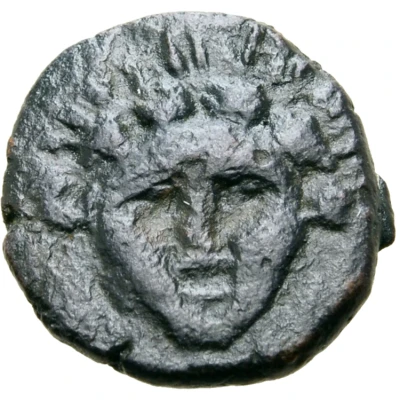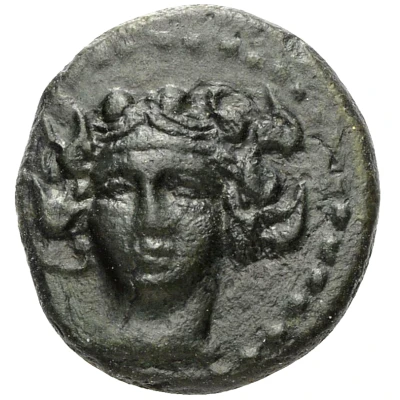


© Numismatik Naumann GmbH
Æ13 120 BC - 100 BC
| Bronze | 1.79 g | 13 mm |
| Issuer | Istros (Moesia) |
|---|---|
| Type | Standard circulation coin |
| Years | 120 BC - 100 BC |
| Currency | Drachm |
| Composition | Bronze |
| Weight | 1.79 g |
| Diameter | 13 mm |
| Shape | Round (irregular) |
| Technique | Hammered |
| Orientation | Variable alignment ↺ |
| Demonetized | Yes |
| Updated | 2024-10-10 |
| Numista | N#194491 |
|---|---|
| Rarity index | 97% |
Reverse
Sea-eagle to left, with wings raised, clutching dolphin in its talons; legend above.
Script: Greek
Lettering: ΙΣΤΡΙ
Interesting fact
The coin features a unique combination of symbols and letters that provide insight into the culture and beliefs of the people who created it. On one side, the coin bears the image of a mythical creature known as a "griffin," which was believed to have the body of a lion and the head and wings of an eagle. The griffin was considered a powerful and protective symbol in ancient times, and its presence on the coin may suggest that the people of Istros believed it was a symbol of strength and prosperity. On the other side of the coin, there is an inscription in ancient Greek that reads "ISTROS," which is the name of the city-state that minted the coin. This inscription provides evidence that the coin was created by a specific community of people who were proud of their identity and wanted to express it through their currency. Overall, the coin is a fascinating artifact that offers a glimpse into the culture and beliefs of an ancient civilization, and its unique combination of symbols and letters makes it a valuable piece of history.



